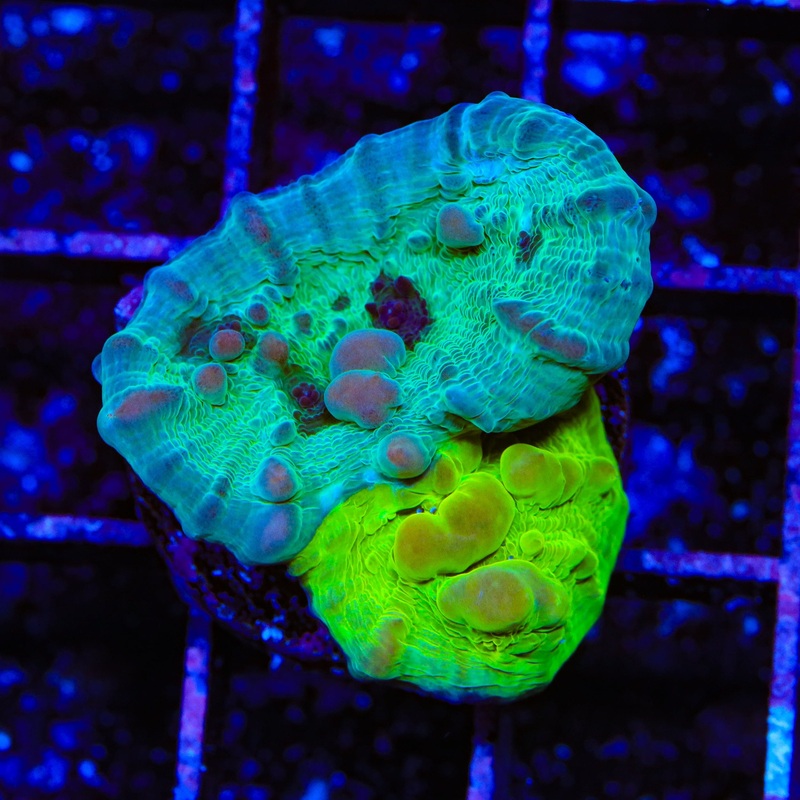 Sale!
Sale! WWC Cosmic Candy Bounce Chalice Coral
$98.00
$799.99
Quick Overview
Introduction to MushroomsMushroom corals are a hardy and adaptable group of soft corals that thrive in a wide range of reef environments. Known for their fleshy, disc-like appearance and ability to spread across rock surfaces, they are a popular choice for
- Satisfaction 100% Guaranteed
- Free shipping on orders over $30
- 60 day easy Return
Introduction to Mushrooms
Mushroom corals are a hardy and adaptable group of soft corals that thrive in a wide range of reef environments. Known for their fleshy, disc-like appearance and ability to spread across rock surfaces, they are a popular choice for both beginner and experienced reef keepers. These corals can tolerate varying levels of light and flow, making them one of the most forgiving corals in the hobby.
They come in a variety of colors and textures, from the smooth surfaces of Discosoma to the bubbly, textured look of Ricordea and the wrinkled appearance of Rhodactis. Their ability to reproduce easily and adjust to different conditions makes them an excellent addition to diverse reef setups.
These corals are ideal for aquarists looking for a low-maintenance option that adds both movement and color to the tank. While generally peaceful, some species can become aggressive if they spread too close to other corals, so careful placement is recommended.
Natural Habitat and Origin
Mushroom corals are found throughout the Indo-Pacific, including regions such as Indonesia, Fiji, the Solomon Islands, and the Great Barrier Reef. They are also present in parts of the Caribbean, particularly in shallow reef environments and lagoons. These corals thrive in areas with moderate to low light, often attaching to hard surfaces such as rocks, dead coral skeletons, and reef rubble.
Unlike many other corals, these do not form rigid skeletons. Instead, they expand and contract their fleshy bodies in response to light, flow, and available nutrients. Some species are known to detach from their original location and drift to new areas, allowing them to colonize different parts of the reef.
In the wild, they play an important role in reef ecosystems by covering bare substrate, providing shelter for small marine organisms, and contributing to biodiversity. Their ability to thrive in lower-light environments and tolerate a range of water conditions makes them well-suited for various tank setups.
Water Chemistry
These corals are among the most forgiving when it comes to water parameters, making them a great choice for a wide range of reef tanks. They can tolerate moderate nutrient levels and do not require the same calcium demands as stony corals. However, stable conditions will support better growth, coloration, and overall health.
Ideal Water Parameters:
- Calcium: 380450 ppm
- Alkalinity: 710 dKH
- Magnesium: 12501350 ppm
- Nitrates: 520 ppm
- Phosphates: 0.030.10 ppm
- Temperature: 7680F
These corals thrive in slightly nutrient-rich environments, where moderate nitrates and phosphates contribute to their health. In ultra-low-nutrient systems, they may shrink or fail to expand fully. However, excessive nutrients can lead to unwanted algae growth on their surfaces. Regular water changes and stable parameters help maintain an optimal environment.
Lighting
These corals adapt well to a variety of lighting conditions, thriving under low to moderate light. While they can tolerate brighter environments, excessive intensity may cause them to retract or lose coloration. Their ability to adjust to different lighting makes them an excellent choice for a range of tank setups.
Lighting Guidelines:
- PAR Range: 50150 for optimal health and expansion.
- Too much light can cause them to shrink, while too little may slow their growth.
- Blue-spectrum lighting can enhance fluorescence in some varieties.
- Gradual acclimation to new lighting conditions helps prevent stress.
At Top Shelf Aquatics, we grow these corals under controlled lighting systems like Ecotech Marine Radions and T5 fixtures to ensure they develop vibrant coloration and healthy expansion. When introducing them to an aquarium, starting in a lower-light area and adjusting placement as needed will help determine the best conditions.
Water Flow
These corals prefer low to moderate water movement, allowing them to expand fully without being disturbed by excessive currents. Gentle flow helps keep their surfaces free of detritus while ensuring they receive adequate nutrients from the water column.
Water Flow Guidelines:
- Low to moderate, indirect flow encourages full expansion and prevents debris buildup.
- High flow can cause retraction or detachment from their substrate.
- Randomized or gentle wave-like motion is ideal for maintaining health and growth.
At Top Shelf Aquatics, we use Ecotech Marine MP pumps and Sicce wave makers to create an environment that provides steady, indirect movement. Observing how they respond to flow in your tank will help determine the best placement.
What We Feed
These corals primarily rely on their symbiotic zooxanthellae for energy but can also absorb nutrients from the water column. While they do not require direct feeding, occasional supplementation can enhance their growth, coloration, and overall health.
Feeding Guidelines:
- They absorb dissolved organic matter and nutrients from the water.
- Finely ground coral foods, such as Reef Roids or Benepets, can be beneficial.
- Phytoplankton strains like Tisochrysis, Rhodomonas, and Tetraselmis provide additional nutrition.
- They can also consume small meaty foods like mysis shrimp, which can encourage growth and better expansion.
- Amino acid supplements may support tissue health and coloration.
Common Challenges
- Shrinking or Lack of Expansion: Caused by insufficient nutrients, excessive lighting, or strong water flow.
- Detachment and Floating Around the Tank: Strong currents or natural propagation can cause them to detach.
- Overgrowth and Spreading: Favorable conditions can lead to rapid expansion, sometimes overtaking other corals.
- Algae Growth on the Corals Surface: High nutrient levels and poor water flow can contribute to algae buildup.
- Bleaching: Exposure to excessive lighting or sudden parameter swings.
- Melting: Extreme stress due to poor water quality, lack of nutrients, or rapid environmental changes.
Acclimation Guide
- Temperature Acclimation: Float the bag for 1520 minutes to equalize temperature.
- Drip Acclimation: Slowly mix tank water over 3045 minutes.
- Lighting Acclimation: Start in a low-light area and increase gradually.
- Placement: Secure on a stable rock structure or sandy substrate.
| Cost: | $25 |
| Free Shipping | We offer free shipping on orders over $30. Please check the free - shipping eligibility at checkout. |
| Delivery Time: | It usually takes [3-5] business days for standard shipping. Please note that this is an estimated time frame and may be affected by local holidays, and unforeseen circumstances. |

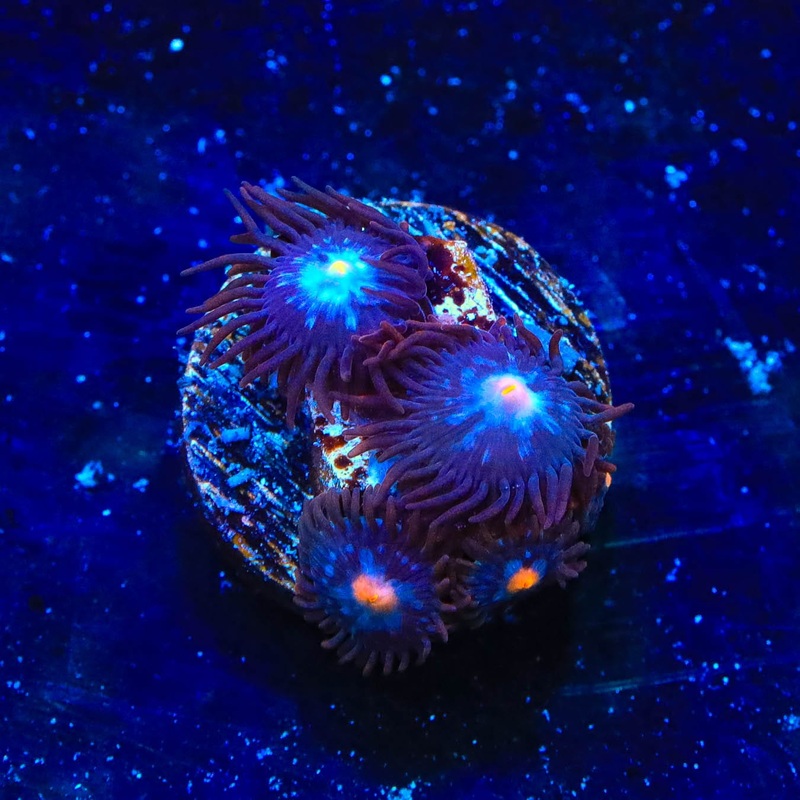
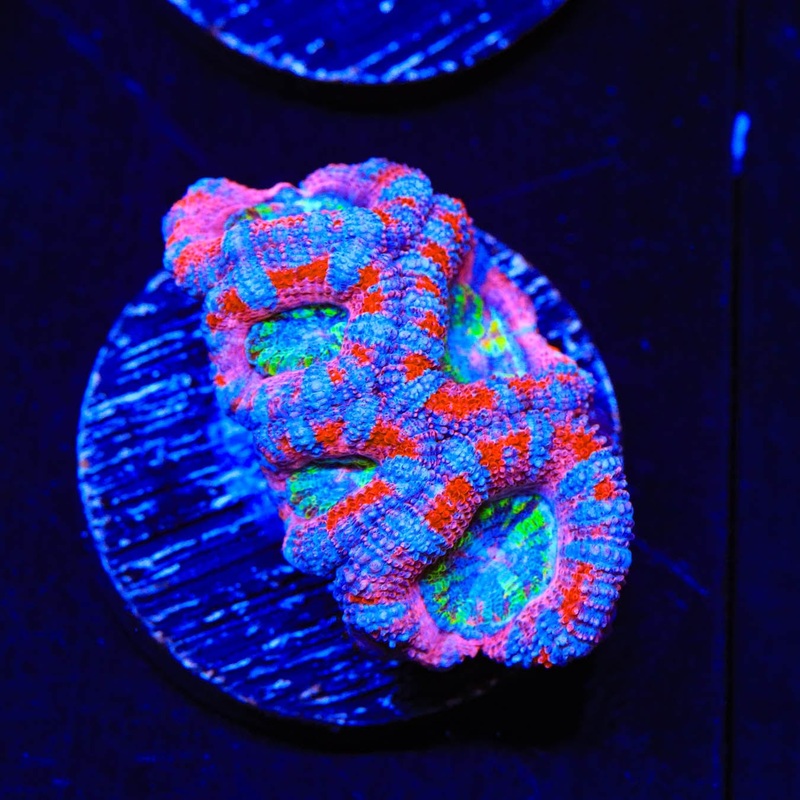
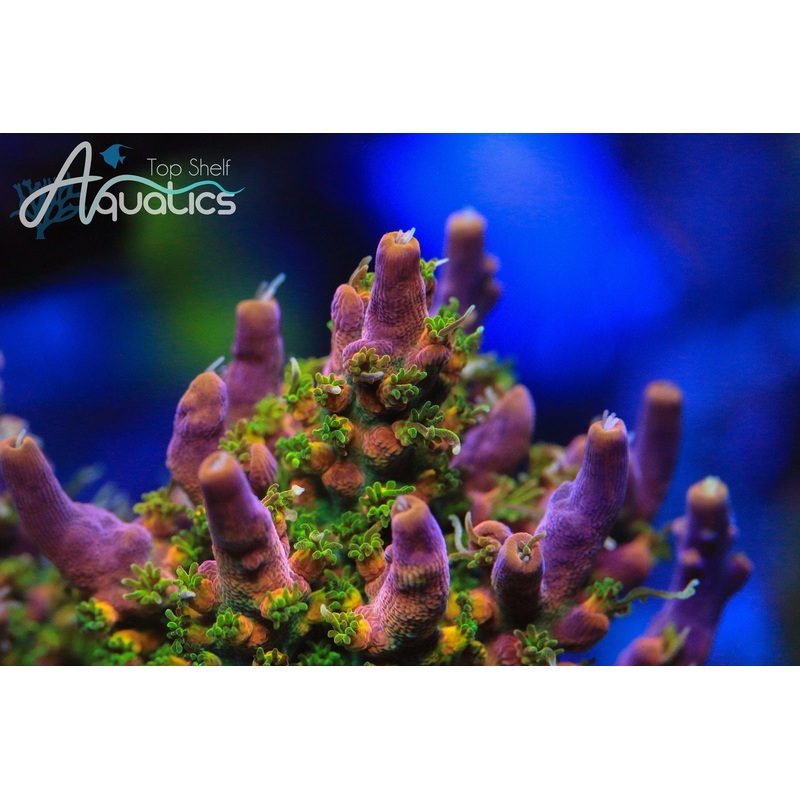
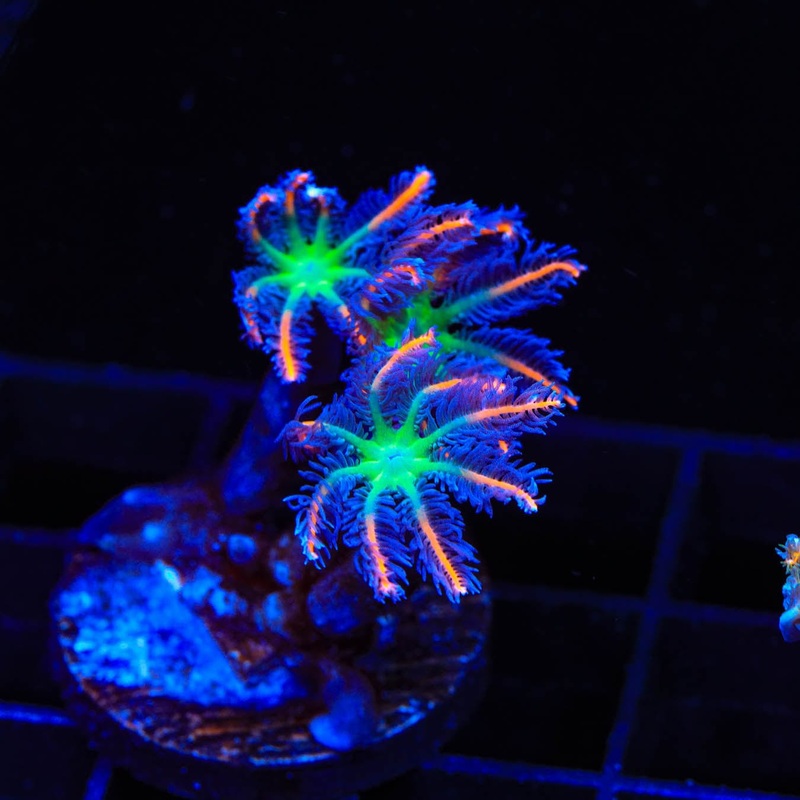
Reviews
There are no reviews yet.